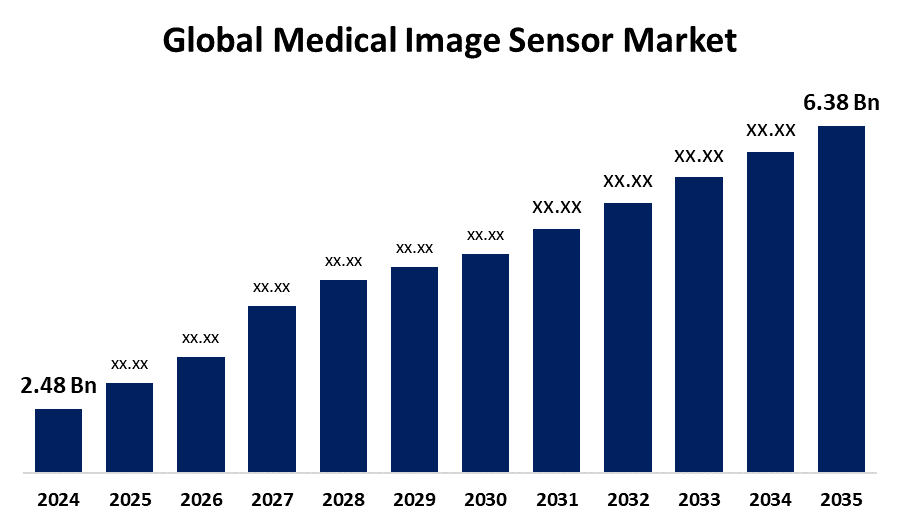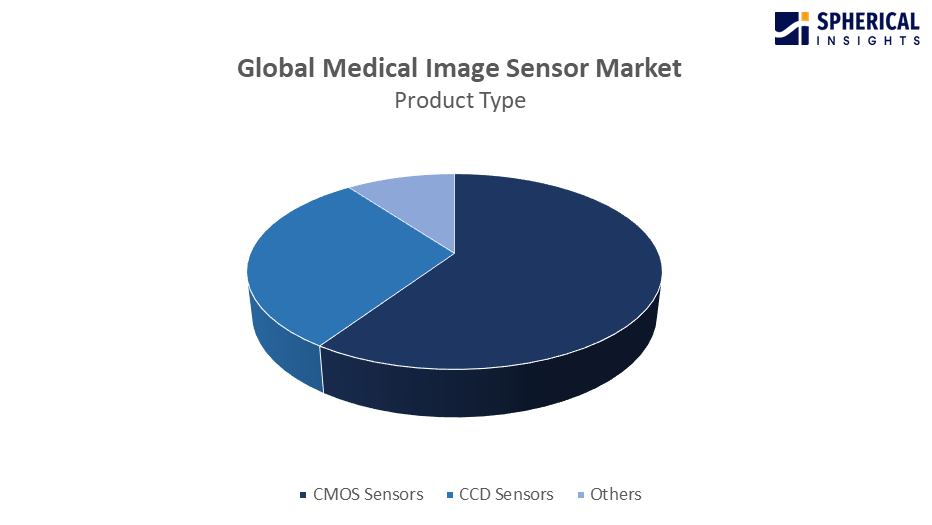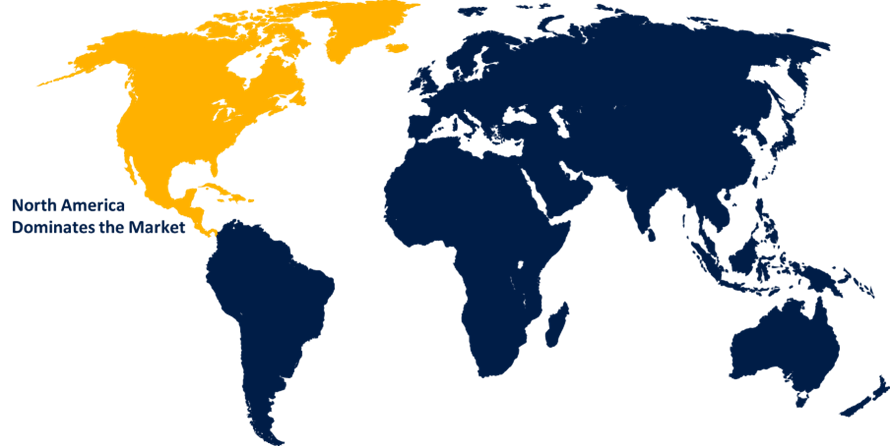Global Medical Image Sensor Market Size, Share, and COVID-19 Impact Analysis, By Product Type (CMOS Sensors, CCD Sensors, and Others), By Application (Endoscopy, X-ray Imaging, Ultrasound, MRI, CT scan, and Others), By Region (North America, Europe, Asia-Pacific, Latin America, Middle East, and Africa), Analysis and Forecast 2025 - 2035
Industry: Electronics, ICT & MediaGlobal Medical Image Sensor Market Size Insights Forecasts to 2035
- The Global Medical Image Sensor Market Size Was Estimated at USD 2.48 Billion in 2024
- The Market Size is Expected to Grow at a CAGR of around 8.97% from 2025 to 2035
- The Worldwide Medical Image Sensor Market Size is Expected to Reach USD 6.38 Billion by 2035
- Asia Pacific is expected to Grow the fastest during the forecast period.

Get more details on this report -
According to a Research Report Published by Spherical Insights and Consulting, The Global Medical Image Sensor Market Size was valued at approximately USD 2.48 Billion in 2024 and is projected to Grow from USD 2.70 Billion in 2025 to around USD 6.38 Billion by 2035, with a compound annual growth rate (CAGR) of 8.97% from 2025 to 2035. The global market for medical image sensors is predicted to grow as there is a rising demand for enhanced diagnostic imaging, an increase in chronic illnesses, technology advancements in sensors, greater use of minimally invasive procedures, and an increase in healthcare organizations around the world.
Global Medical Image Sensor Market Forecast and Revenue Outlook
- 2024 Market Size: USD 2.48 Billion
- 2035 Projected Market Size: USD 6.38 Billion
- CAGR (2025-2035): 8.97%
- North America: Largest market in 2024
- Asia Pacific: Fastest growing market
Market Overview
The medical image sensor market refers to the industry that uses cutting-edge sensor technologies to acquire high-quality medical images that inform diagnosis, monitoring and treatment in a variety of use cases, including endoscopy, radiology, and minimally invasive surgery. The worldwide medical image sensor market is experiencing stable growth and is benefiting from advances in sensor technologies, such as advanced CMOS and CCD sensors, with improved sensitivity and resolution, and less noise. One of the main drivers is an increase in the demand for less invasive procedures that require clear identification of internal organs. Another is the incorporation of artificial intelligence (AI) in reviewing and interpreting images, leading to increased efficiencies and better accuracy in diagnoses. Improved imaging solutions are becoming readily adopted due to the increased incidence of chronic diseases like cancer and cardiovascular disease; these require more frequent imaging procedures. Growth is also fuelled by public and private investments in healthcare infrastructure, as well as an ageing population with greater healthcare requirements. The need for portable, high-performance imaging equipment with medical image sensors is also being driven by the COVID-19 pandemic's acceleration of the growth of telemedicine and remote patient monitoring. These patterns demonstrate how crucial the market is to improving diagnostic skills and facilitating the global shift to digital healthcare. A 2-megapixel ultra-tiny CMOS image sensor designed for medical applications was recently introduced by SmartSens, improving imaging accuracy in small devices. Leading the way in analogue, digital, and mixed-signal processing, Analogue Devices Inc. provides semiconductors, sensors, and cutting-edge solutions to more than 100,000 customers in a variety of sectors, including medical imaging, healthcare, automotive, and communication.
Key Market Insights
- North America is expected to account for the largest share in the Medical Image Sensor Market during the forecast period.
- In terms of product type, the CMOS sensors segment is projected to lead the Medical Image Sensor Market throughout the forecast period
- In terms of application, the endoscopy segment captured the largest portion of the market
Medical Image Sensor Market Trends
- CMOS sensors are becoming more popular than CCD ones because of their improved sensitivity, resolution, and affordability.
- AI and sensor integration for improved picture analysis and automated diagnosis.
- Growing need for portable, minimally intrusive imaging equipment.
- Growth of applications for remote patient monitoring and telemedicine.
- Compact, low-power, and high-performance sensor improvements are receiving more attention.
Report Coverage
This research report categorizes the medical image sensor market based on various segments and regions, forecasts revenue growth, and analyses trends in each submarket. The report analyses the key growth drivers, opportunities, and challenges influencing the medical image sensor market. Recent market developments and competitive strategies, such as expansion, type launch, development, partnership, merger, and acquisition, have been included to draw the competitive landscape in the market. The report strategically identifies and profiles the key market players and analyzes their core competencies in each sub-segment of the medical image sensor market.
Global Medical Image Sensor Market Report Coverage
| Report Coverage | Details |
|---|---|
| Base Year: | 2024 |
| Market Size in 2024: | USD 2.48 Billion |
| Forecast Period: | 2025-2035 |
| Forecast Period CAGR 2025-2035 : | 8.97% |
| 2035 Value Projection: | USD 6.38 Billion |
| Historical Data for: | 2020-2023 |
| No. of Pages: | 166 |
| Tables, Charts & Figures: | 111 |
| Segments covered: | By Product Type, By Application and COVID-19 Impact Analysis |
| Companies covered:: | OmniVision Technologies, Inc., ON Semiconductor Corporation, Teledyne Technologies Incorporated, STMicroelectronics N.V., Hamamatsu Photonics K.K., ams AG, Toshiba Corporation, Panasonic Corporation, Sharp Corporation, Himax Technologies, Inc., SK Hynix Inc., Pixart Imaging Inc., CMOSIS NV, Rohm Semiconductor, Melexis NV, Teledyne e2v, FLIR Systems, Inc., and Others |
| Pitfalls & Challenges: | COVID-19 Empact,Challenges, Future, Growth, & Analysis |
Get more details on this report -
Driving factors
The growing presence of AI in teleradiology and diagnostic imaging, where demand is greater than the supply of radiologists, creates a market for medical image sensors. Demand is also being driven by an increase in chronic or persistent diseases, including neurological, cardiovascular, and cancerous conditions, in addition to greater utilization of minimally invasive, image-guided procedures. The ageing population will be a major factor, as older adults typically require imaging diagnostics more frequently than younger adults. Rising health care costs, as well as globally, will drive investment in new imaging technologies. Collectively, these factors all point to a promising future for high-performance, AI-enabled medical imaging sensors.
Restraining Factor
High equipment costs, and other issues facing small healthcare organizations are barriers to their utilization of medical image sensors. Market penetration is also limited by regulatory compliance, technological complexity, and a lack of skilled workers. In addition to these barriers facing market expansion, manufacturers must contend with encroaching competition from imaging technologies, and regular maintenance of sensors that impact the cost-effectiveness. In total, these factors generally detract from market growth potential and limit the expansive use of imaging sensors.
Market Segmentation
The Global Medical Image Sensor market is divided into product type and application.
Global Medical Image Sensor Market, By Product Type:
- The CMOS sensors segment dominated the market in 2024 and is projected to grow at a substantial CAGR during the forecast period.
Based on product type, the global medical image sensor market is segmented into CMOS sensors, CCD sensors, and others. Among these, the CMOS sensors segment dominated the market in 2024 and is projected to grow at a substantial CAGR during the forecast period. Their new features, inexpensive cost, high speeds, and lower power expenses. These sensors are increasingly gaining prevalence in medical uses that require compact, portable devices, like endoscopy and portable X-ray equipment. Their ability to generate high-quality imagery at a low cost has been a major driver of their commercialization. In addition, further advancements in CMOS technology, such as back-illuminated and 3D-integrated sensors, are expected to fuel the commercialization of more devices in the marketplace.

Get more details on this report -
The CCD sensors segment in the medical image sensor market is expected to grow at the fastest CAGR over the forecast period. Driven by excellent sensitivity, minimal noise, and image quality. Their effectiveness in specialised areas like radiology, ophthalmology, and endoscopy will ensure demand in the future, especially in advanced medical imaging where accuracy, precision, and better resolution are vital to the process.
Global Medical Image Sensor Market, By Application:
- The endoscopy segment accounted for the largest market share in 2024 and is anticipated to grow at a significant CAGR during the forecast period.
Based on application, the global medical image sensor market is segmented into endoscopy, X-ray imaging, ultrasound, MRI, CT scan, and others. Among these, the endoscopy segment accounted for the largest share in 2024 and is anticipated to grow at a significant CAGR during the forecast period. The growing need for minimally invasive surgical and diagnostic techniques, endoscopy is expanding quickly. In order to provide high-resolution images that support precise diagnosis and treatment, medical image sensors are crucial components of endoscopic cameras. The need for sophisticated endoscopic imaging systems is primarily being driven by the increasing frequency of gastrointestinal illnesses and the growing preference for minimally invasive procedures.
The X-ray segment in the medical image sensor market is expected to grow at the fastest CAGR over the forecast period. Modern sensor technology integrated with digital X-ray systems enhances the accuracy of diagnosis, reduces radiation exposure, and delivers superior quality images. These advancements are essential in areas where diagnostic imaging is especially important, including orthopaedics, dentistry, and mammography. An increasing focus on patient safety and the requirement of an early and accurate diagnosis, is contributing to increased demand for high-quality image sensors and facilitating the adoption of advanced X-ray imaging solutions.
Regional Segment Analysis of the Global Medical Image Sensor Market
- North America (U.S., Canada, Mexico)
- Europe (Germany, France, U.K., Italy, Spain, Rest of Europe)
- Asia-Pacific (China, Japan, India, Rest of APAC)
- South America (Brazil and the Rest of South America)
- The Middle East and Africa (UAE, South Africa, Rest of MEA)
North America Medical Image Sensor Market Trends

Get more details on this report -
North America is expected to hold the largest share in 2024 for the global Medical Image Sensor market over the forecast period.
North America is expected to grow at the largest CAGR in the medical image sensor market during the forecast period. This rising demand is mainly driven by an increase in healthcare costs, the desire for less invasive and AI-enabled diagnostic procedures, and increased application of advanced imaging technologies. These innovative approaches to detection and diagnosis will benefit from established healthcare infrastructure, public and private sector R&D funding, and the presence of leading global medical device manufacturers, to develop and deliver new high-performance medical image sensors in hospitals, clinics, and diagnostic centres.
U.S. Medical Image Sensor Market Trends
The growing prevalence of chronic and age-related disorders, the growing need for portable and less invasive technologies, and the expanding acceptance of AI-powered diagnostic imaging are the main factors propelling the U.S. medical image sensor market. Focussing on high-resolution, effective, and small imaging solutions, technological developments in CMOS and CCD sensors, the growth of telemedicine, and increased healthcare spending all contribute to the market's progress.
Asia Pacific Medical Image Sensor Market Trends
Asia Pacific is expected to grow at the fastest CAGR in the medical image sensor market during the forecast period. This is driven by increased healthcare infrastructure, rapid industrialisation, and the increasing adoption of advanced imaging technologies. The growing elderly population, increased prevalence of chronic diseases, and government initiatives for increased digital healthcare and investments in medical technology are also driving the need for high-performance imaging sensors in the region.
Europe Medical Image Sensor Market Trends
Strong healthcare infrastructure, increasing demand for minimally invasive procedures, and the expanding acceptance of AI-enabled imaging are driving the European medical image sensor market. Growth is further fuelled by improvements in CMOS and CCD sensor technology, rising rates of chronic illnesses, and encouraging government policies that prioritise high-resolution, effective, and sustainable medical imaging technologies.
Competitive Analysis:
The report offers the appropriate analysis of the key organizations/companies involved within the global medical image sensor market, along with a comparative evaluation primarily based on their type of offering, business overviews, geographic presence, enterprise strategies, segment market share, and SWOT analysis. The report also provides an elaborate analysis focusing on the current news and developments of the companies, which includes type development, innovations, joint ventures, partnerships, mergers & acquisitions, strategic alliances, and others. This allows for the evaluation of the overall competition within the market.
Worldwide Top Key Players in The Medical Image Sensor Market Include
- OmniVision Technologies, Inc.
- ON Semiconductor Corporation
- Teledyne Technologies Incorporated
- STMicroelectronics N.V.
- Hamamatsu Photonics K.K.
- ams AG
- Toshiba Corporation
- Panasonic Corporation
- Sharp Corporation
- Himax Technologies, Inc.
- SK Hynix Inc.
- Pixart Imaging Inc.
- CMOSIS NV
- Rohm Semiconductor
- Melexis NV
- Teledyne e2v
- FLIR Systems, Inc.
- Others
Key Target Audience
- Market Players
- Investors
- End-users
- Government Authorities
- Consulting and Research Firm
- Venture capitalists
- Value-Added Resellers (VARs)
Recent development
- In June 2025, Gpixel has introduced two advanced line-scan image sensors sensitive to the short-wave infrared (SWIR) range of 900–1700 nm. While primarily designed for industrial and inspection applications, these sensors may also support specialized medical imaging modalities, enhancing precision and detection capabilities.
- In June 2024, OMNIVISION unveiled a compact camera module specifically designed for 3D intraoral scanners, enabling high-resolution dental imaging in a smaller form factor. The innovation enhances precision, patient comfort, and workflow efficiency in dental diagnostics.
Market Segment
This study forecasts revenue at the global, regional, and country levels from 2020 to 2035. Spherical Insights has segmented the medical image sensor market based on the following segments:
Global Medical Image Sensor Market, By Product Type
- CMOS Sensors
- CCD Sensors
- Others
Global Medical Image Sensor Market, By Application
- Endoscopy
- X-ray Imaging
- Ultrasound
- MRI
- CT scan
- Others
Global Medical Image Sensor Market, By Regional Analysis
- North America
- US
- Canada
- Mexico
- Europe
- Germany
- UK
- France
- Italy
- Spain
- Russia
- Rest of Europe
- Asia Pacific
- China
- Japan
- India
- South Korea
- Australia
- Rest of Asia Pacific
- South America
- Brazil
- Argentina
- Rest of South America
- Middle East & Africa
- UAE
- Saudi Arabia
- Qatar
- South Africa
- Rest of the Middle East & Africa
Frequently Asked Questions (FAQ)
-
1. What is the CAGR of the Medical Image Sensor market over the forecast period?The global medical image sensor market is projected to expand at a CAGR of 8.97% during the forecast period.
-
2. What is the market size of the Medical Image Sensor market?The global medical image sensor market size is expected to grow from USD 2.48 billion in 2024 to USD 6.38 billion by 2035, at a CAGR 8.97% of during the forecast period 2025-2035.
-
3. Which region holds the largest share of the Medical Image Sensor market?North America is anticipated to hold the largest share of the medical image sensor market over the predicted timeframe.
-
4. Who are the top 10 companies operating in the global Medical Image Sensor market?OmniVision Technologies, Inc., ON Semiconductor Corporation, Teledyne Technologies Incorporated, STMicroelectronics N.V., Hamamatsu Photonics K.K., ams AG, Toshiba Corporation, Panasonic Corporation, Sharp Corporation, Himax Technologies, Inc.
-
5. What factors are driving the growth of the Medical Image Sensor market?The growing prevalence of age-related and chronic diseases, the expansion of telemedicine, the growing demand for minimally invasive procedures, the growing adoption of AI-enabled diagnostics, technological advancements in CMOS and CCD sensors, and rising healthcare costs globally are the main factors propelling the medical image sensor market.
-
6. What are the market trends in the Medical Image Sensor market?Important trends in the medical image sensor sector are the transition from charge-coupled devices (CCDs) sensors to modern complementary metal-oxide semiconductors (CMOS) sensors, the addition of A.I. for automated diagnostic reading, the growing usage of portable and low-invasive imaging devices, as well as the expansion of telemedicine, and the need for higher resolution, energy-efficient sensors. The usage of wearable and compact imaging sensors have also seen an uptick.
-
7. What are the main challenges restricting wider adoption of the Medical Image Sensor market?Affordability, usability, and wider market penetration are all hampered by the main obstacles preventing the widespread adoption of medical image sensors, which include high equipment and maintenance costs, strict regulatory compliance, technological complexity, a lack of qualified professionals, and competition from alternative imaging technologies.
Need help to buy this report?